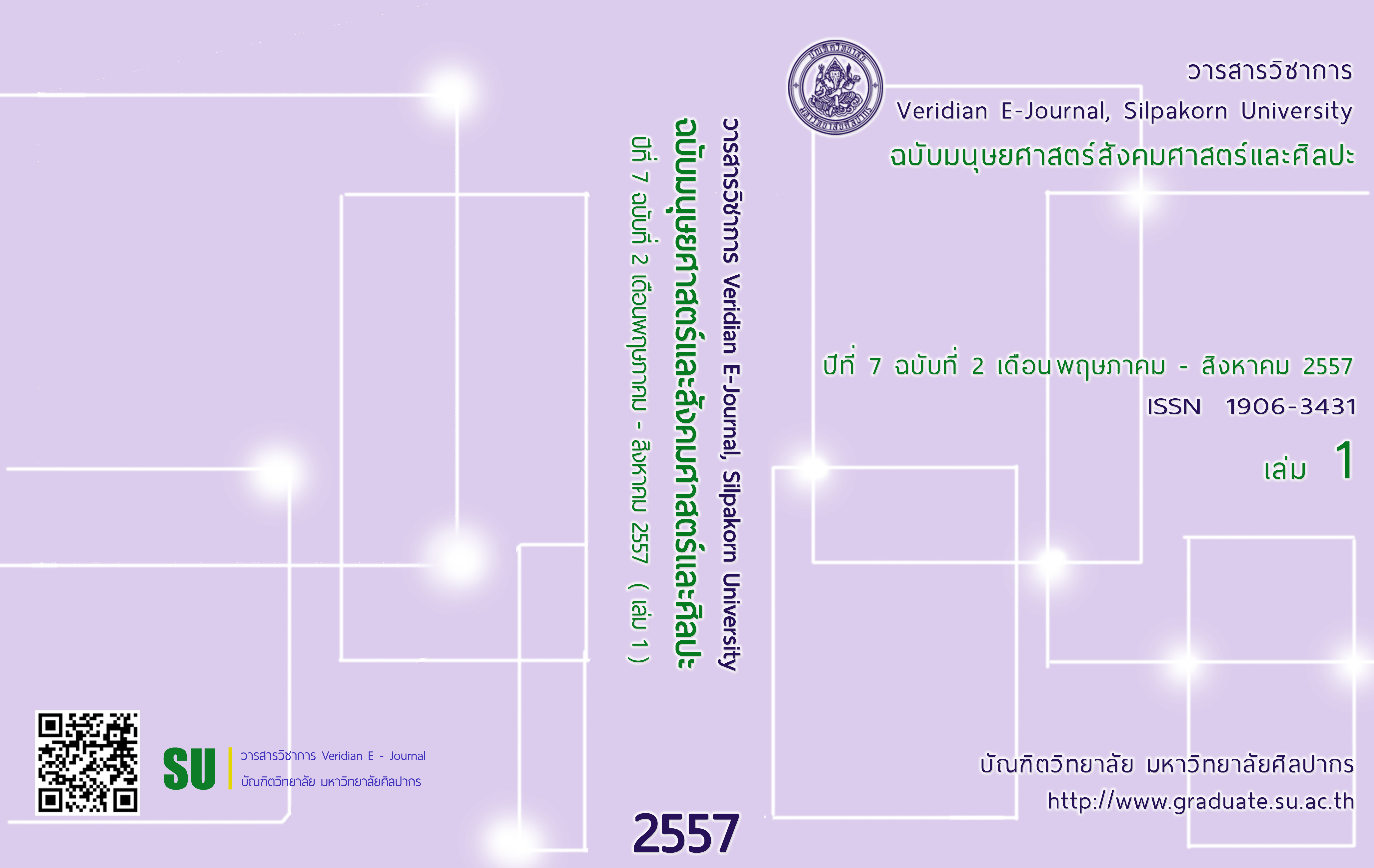ยุทธศาสตร์การขับเคลื่อนการศึกษาขั้นพื้นฐานสู่ประชาคมอาเซียน Strategies for Driving Basic Education towards ASEAN
Main Article Content
Abstract
บทคัดย่อ
การวิจัยครั้งนี้มีวัตถุประสงค์เพื่อ 1) ศึกษาผลกระทบต่อการจัดการศึกษาขั้นพื้นฐานที่เกิดจากการเข้าสู่ประชาคมอาเซียนของประเทศไทยในปี พ.ศ.2558 2) สร้างยุทธศาสตร์การจัดการศึกษาขั้นพื้นฐานที่เหมาะสมกับการเข้าสู่ประชาคมอาเซียนของประเทศไทย 3) ประเมินยุทธศาสตร์การขับเคลื่อนการศึกษาขั้นพื้นฐานสู่ประชาคมอาเซียนที่ร่างขึ้น
กลุ่มตัวอย่างที่ใช้ในการวิจัยคือ ผู้เชี่ยวชาญในสพฐ. สพป. และสพม. จำนวน 19 คนและบุคลากรทางการศึกษาทั่วประเทศที่เกี่ยวข้อง จำนวน 488 คน เป็นการวิจัยแบบผสมผสาน (Mixed Method) โดยใช้การวิจัยเชิงคุณภาพและเชิงปริมาณ เครื่องมือที่ใช้ในการวิจัย คือ แบบสัมภาษณ์และแบบสอบถาม วิเคราะห์ข้อมูลใช้ค่าร้อยละ (Percentage) ค่าเฉลี่ย (Mean) และค่าเบี่ยงเบนมาตรฐาน (Standard Deviation)
ผลการวิจัยพบว่า
1. การเข้าสู่ประชาคมอาเซียนนั้น ผู้เรียนต้องได้รับการพัฒนาในด้านการคิดวิเคราะห์และสังเคราะห์ ความคิดริเริ่มสร้างสรรค์ ภาษาที่ 2 และภาษาเพื่อนบ้าน ครูต้องได้รับการพัฒนาให้สามารถปรับเปลี่ยนรูปแบบการสอน การบูรณาการหลักสูตรและใช้เทคโนโลยีในการสอน ได้รับการส่งเสริมทางด้านภาษา หลักสูตรแกนกลางมาตรฐานควรมาจากการระดมความคิดจากผู้เกี่ยวข้องในทุกระดับ กระทรวงศึกษาธิการต้องกระจายอำนาจ การบริหารจัดสรรงบประมาณให้เหมาะสม ติดตามประเมินความคุ้มค่า และความสำเร็จของการใช้จ่าย
2. ยุทธศาสตร์การขับเคลื่อนการศึกษาขั้นพื้นฐานสู่ประชาคมอาเซียนของประเทศไทย ประกอบด้วย 1) ส่งเสริมการพัฒนาผู้เรียนให้มีความรู้ ความสามารถ มีทักษะในศตวรรษที่ 21 และมีคุณลักษณะอันพึงประสงค์ตามเกณฑ์มาตรฐานการศึกษาชาติ เพื่อมุ่งสู่มาตรฐานการศึกษาในระดับชาติ
ระดับอาเซียน และระดับสากล 2) พัฒนาครูและบุคลากรทางการศึกษา ให้มีความรู้ มีทักษะการถ่ายทอด
และมีคุณลักษณะอันพึงประสงค์ตามมาตรฐานวิชาชีพครู เพื่อพัฒนาผู้เรียนสู่อาเซียน 3) เร่งรัดการพัฒนาการบริหารจัดการศึกษาขั้นพื้นฐานในทุกรูปแบบ ทุกระดับ เพื่อยกระดับมาตรฐานสู่อาเซียน 4)ส่งเสริมการพัฒนาหลักสูตรและการจัดการเรียนรู้ของการศึกษาขั้นพื้นฐาน ทุกรูปแบบ ทุกระดับ สู่มาตรฐานสากล 5) ส่งเสริมทุกภาคส่วนมีส่วนร่วมในการจัดการศึกษาขั้นพื้นฐาน ทั้งการศึกษาในระบบ นอกระบบ และการศึกษาตามอัธยาศัย บนหลักการมีส่วนร่วมคือ ร่วมคิด ร่วมทำ ร่วมตรวจสอบ ร่วมรับผิดชอบ เพื่อขับเคลื่อนการศึกษาขั้นพื้นฐานของประเทศไทยสู่อาเซียน และ 6) ส่งเสริมการบริหารจัดการงบประมาณการศึกษาขั้นพื้นฐานทุกรูปแบบ ทุกระดับ แบบมุ่งเน้นผลงาน
3. ยุทธศาสตร์การขับเคลื่อนการศึกษาขั้นพื้นฐานสู่ประชาคมอาเซียนที่ร่างขึ้น มีความเหมาะสมในระดับมากถึงมากที่สุด มีความเป็นไปได้ในระดับมากถึงมากที่สุด มีความเป็นประโยชน์ในระดับมากถึงมากที่สุดและมีความถูกต้องในระดับมากถึงมากที่สุด ในทุกกลยุทธ์ ทั้ง 94 แนวทาง
คำสำคัญ : ยุทธศาสตร์, การศึกษาขั้นพื้นฐาน, ประชาคมอาเซียน
ABSTRACT
The purpose of this research is to: 1) study the impact of ASEAN Community integration in 2015 on the provision of basic education in Thailand, 2) build the basic education strategies for Thailand which are appropriate for ASEAN community integration, and 3) Evaluate the draft strategies for driving basic education towards the ASEAN community. The sample participants used in the study were 19 experts from Office of The Basic Education Commission, Primary Educational Service Area (PESA) and Secondary Educational Service Area (SESA) and 488 educators across the country. This study utilized a mixed method research approach, using qualitative and quantitative data analysis. The research tools used in-depth interviews and questionnaires. The statistics used for data analysis were percentage, mean and standard deviation (SD).
The results found that:
1. Entering into the ASEAN community, students need to be developed in the areas of critical thinking and synthesis, initiative, second language and neighboring languages. Teachers need to be developed to modify teaching styles, curriculum integration and technology in teaching, while taking advantage of professional development opportunities. Core curriculum standards should come from brainstorming at all levels. The Ministry of Education should decentralize the administration, allocate the budget appropriately, evaluate the worthiness and the achievement of expenditure efficiency.
2. The strategy for driving basic education in Thailand towards the ASEAN community contains the following: 1) to encourage the development of learners to have knowledge, ability, skills for the 21st century and desired character traits on the basis of the national education standards while advancing the education standards in the national, regional, ASEAN and international levels; 2) to develop the knowledge level of teachers and educational personnel and to develop the skills to convey this knowledge while ensuring the teacher quality meets the professional standards required to develop learners in ASEAN; 3) to accelerate the development of basic education management in all forms and at all levels to raise standards for ASEAN; 4) to raise curriculum development and the learning management of basic education in all forms and at all levels to international standards; 5) to encourage all sectors involved in the provision of basic education including formal, non-formal and informal education to adopt the principle of participation to promote thinking, doing, checking and being responsible together to drive the basic education towards ASEAN; 6) to promote the performance-based budgeting for basic education in all forms and at all levels.3. The draft strategy for driving basic education towards ASEAN community is appropriate, feasible, utilizable and accurate at the high to highest levels in all 94 strategies.
